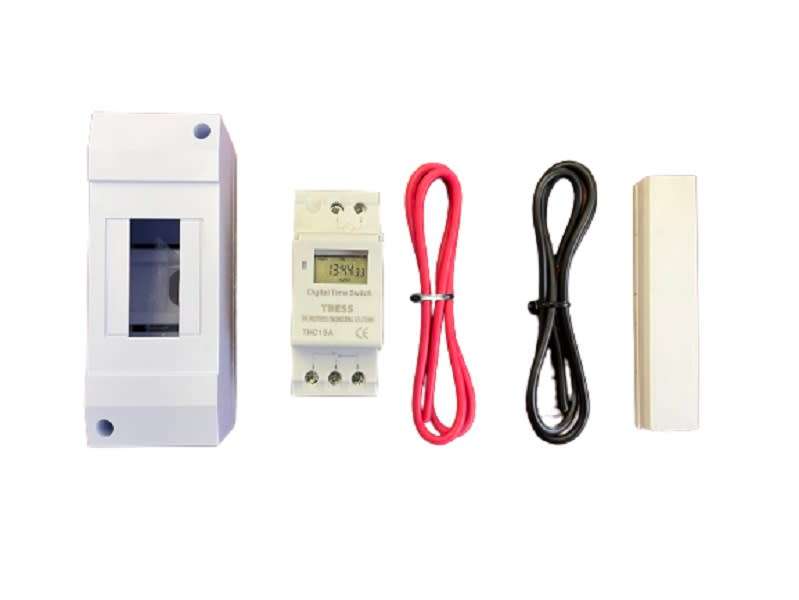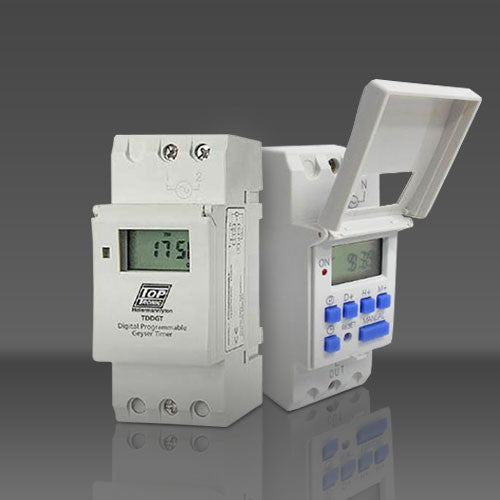A Complete Guide to Choosing the Right Geyser Timer for Your Needs
Understanding the Common Issues Linked With Geyser Timers for Effective Water Home Heating
The reliable functioning of geyser timers is vital for maximizing water home heating effectiveness, yet users commonly run into a variety of typical concerns that can endanger efficiency. Breakdowns, incorrect setups, and compatibility challenges are simply a few of the challenges that can emerge, possibly bring about enhanced energy expenses and decreased integrity. Furthermore, power supply disparities and the requirement for routine maintenance can complicate matters even more. Understanding these elements is essential to guaranteeing that geyser systems operate at their ideal, welcoming a closer exam of the remedies that can resolve these widespread worries.
Typical Malfunctions

One prevalent malfunction is the failing of the timer to initiate home heating cycles. This can occur because of electric problems, such as a blown fuse or damaged electrical wiring, protecting against the timer from receiving power. One more usual problem is irregular temperature guideline; the hot spring may overheat or stop working to heat water sufficiently. This might be credited to a malfunctioning thermostat or debris build-up within the container, protecting the home heating element.

Incorrect Timer Settings
Misconfiguration of timer settings is a typical problem that can bring about significant inefficiencies in hot spring operation. When timers are set incorrectly, they may turn on the hot spring at suboptimal times, leading to either inadequate home heating of water or too much power intake. If the timer is set to turn on throughout height electrical energy hours, it not just blows up energy costs yet additionally leads to unnecessary stress on the electrical infrastructure.
Moreover, wrong timer settings can interfere with the availability of warm water when needed - geyser timer. A poorly set up schedule may leave households without warm water during peak usage durations, causing trouble and aggravation. Conversely, continuous operation as a result of misconfigured timers can result in overheating, damaging the geyser and raising maintenance expenses
Customers ought to familiarize themselves with their geyser's home heating needs and change the timer to align with their specific requirements. Properly set up timer settings inevitably add to an extra lasting and economical water heating option.
Compatibility Issues
Compatibility concerns can significantly impact the efficiency of hot spring timers, particularly when integrating with various furnace navigate to this website or smart home technologies (geyser timer). Several geyser timers are made to collaborate with specific kinds of hot water heater, such as repellent burner or gas-fired systems. If a timer is not compatible with the heating system, it may not function appropriately, resulting in ineffective water home heating or also damage to the system
In addition, as smart home innovation remains to progress, the assimilation of hot spring timers with home automation systems can present difficulties. Not all geyser timers provide the exact same level of connectivity, which can prevent their ability to interact successfully with mobile applications or wise centers. Individuals might discover themselves not able to control their geyser timers remotely or established timetables that line up with other clever gadgets in their home.
Moreover, the compatibility of geyser timers with existing electric infrastructure can also be a problem. Variations in voltage rankings, wiring requirements, and circuit arrangements can lead to functional issues. It is crucial to extensively assess compatibility with both the home heating tools and the home's electric system before choosing a hot spring timer to make certain ideal you could try this out performance.
Power Supply Problems
Power supply troubles can significantly prevent the functionality of hot spring timers, resulting in unstable procedure and increased energy costs. These issues might originate from insufficient voltage supply, irregular power resources, or damaged electrical wiring. A hot spring timer requires a steady electric input to work efficiently; fluctuations can result in erratic efficiency or total failure.
Additionally, wrong voltage ratings can damage the timer, making it faulty. It is critical to make certain that the hot spring timer is suitable with the electrical requirements of the installation website. Additionally, power rises or disturbances can interfere with the timer's programming, bring about inefficient heating cycles and unanticipated functional hold-ups.
In instances of persistent power supply problems, speaking with a certified electrician is advisable to make sure that the electric infrastructure appropriately supports the geyser timer's demands. Proper focus to power supply can enhance the efficiency and longevity of the hot spring timer system.
Upkeep and Troubleshooting
Regular upkeep and troubleshooting are important for making sure the dependable operation of hot spring timers. Regular checks should consist of inspecting the timer's connections and electrical wiring for any type of indicators of wear or damages. Guarantee that all electrical elements are protected and cost-free from rust, as this can impact performance. Routinely tidy the timer unit and bordering areas to stop dirt buildup, which can conflict with its procedure.
If issues occur, start troubleshooting by resetting the timer to i thought about this its default setups. Confirm the power supply to make sure the timer is obtaining adequate voltage.
Additionally, consider scheduling expert assessments annually to deal with prospective issues proactively. This strategy can expand the life expectancy of the hot spring timer and enhance its effectiveness. By focusing on maintenance and effective troubleshooting, individuals can mitigate common troubles and ensure regular efficiency from their geyser timers.
Conclusion
In verdict, identifying and resolving the typical issues linked with hot spring timers is essential for enhancing water home heating effectiveness. Timer malfunctions, incorrect settings, compatibility difficulties, and power supply troubles can significantly influence efficiency.
The reliable performance of geyser timers is crucial for maximizing water heating performance, yet users often experience a variety of common problems that can compromise performance. When timers are set inaccurately, they might activate the hot spring at suboptimal times, resulting in either not enough home heating of water or too much energy consumption.Compatibility issues can substantially influence the efficiency of geyser timers, specifically when integrating with different home heating systems or wise home innovations. Numerous hot spring timers are designed to function with details kinds of water heating systems, such as repellent home heating aspects or gas-fired systems.In conclusion, acknowledging and attending to the usual issues associated with geyser timers is vital for optimizing water home heating efficiency.